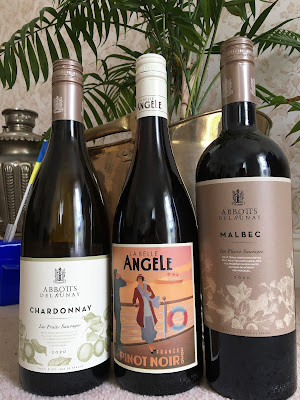A dessert recipe from Kindling Restaurant, Brighton - with wine matches
Kindling Restaurant in Brighton is about more than just the delicious food, it is a community of people: staff, customers and suppliers all sharing and celebrating local produce. Nature writes the menu as the seasons inspire the dishes. Kindling is featured in the Michelin Guide and is a member of the Sustainable Restaurants Association.
The Food - chocolate sponge with salted caramel sauce and popcorn
This decadent dessert is dairy-free, suitable for vegans and can even be made gluten free as well, but you’ll never be able to tell! Rich moist chocolate sponge, topped with creamy caramel sauce and crunchy salty popcorn.
Serve with chocolate sorbet or dairy free ice cream for a luxury finish.
For non-vegans, just substitute with the appropriate dairy products.
The wine matches
The rule of wine matching for puddings is that the wine must be sweeter than the food; the sweetness in this recipe comes from the salted caramel sauce, so the quantity of sauce you apply will determine the required sweetness level of the wine.
These two wines will work with the gentlest of drizzles - no more than a teaspoon or two. This will leave you with a lot of surplus sauce so either reduce the quantities or, if you want the sponge bathed in the style of a sticky toffee pudding, you'll need to consider espresso, whisky, ruby port or a sweet dark sherry.
Gewurztraminer is a once-classic, now slightly-out-of-fashion aromatic and perfumed grape; with high natural sugars, it is a spiced, exotic, indulgent hedonist's delight.
a heady perfume of lychees, rose petals, exotic fruits and sweet spices; rich, full and supple with exotic citrus fruits, pineapple and mango with acacia-blossom honey.
tropical fruits with honey, ginger and lychees; waxy, viscous, unctuous and sweet with pineapple pieces, exotic melon and overripe peach and orange, candied peel; concentrated and intense
The recipe
For the sponge:
75g oil
35g good quality cocoa powder
220g dairy free yogurt e.g. soya yogurt
30g oat milk
2 tsp (10ml) distilled vinegar
150g soft dark brown sugar
140g self-raising flour (gluten-free self-raising flour will also work here)
¾ tsp bicarbonate of soda
½ tsp table salt
• Line an 8-inch square cake tin with baking paper. Preheat the oven to 170C.
• Place the oil and cocoa powder in a small pan and heat gently for a few minutes to help bring out the flavour of the chocolate, then set aside to cool.
• Put the dairy free yogurt, oat milk, vinegar and sugar together in a mixing bowl or kitchen aid and whisk until smooth. Then stir in the chocolate and oil mixture.
• Sift the flour, bicarbonate of soda and salt together in a clean bowl. Fold into the wet ingredients, mixing well to avoid any lumps.
• Pour into the lined cake tin and gently level using a spatula, being careful to avoid removing too much air from the cake.
• Bake in the preheated oven at 170C for 20 - 25 mins, until risen and springy to the touch.
Salted caramel sauce:
200g vegan butter alternative
250g soft dark brown sugar
125g golden syrup
Large pinch of Maldon sea salt
• Place all the ingredients in a medium sized pan and heat gently over a low heat, whisking until combined.
• Whisk the sauce occasionally as it cools to ensure a silky texture.
Popcorn:
A small handful of popping corn kernels
2 tbsp of oil
Fine salt for seasoning
• Heat the oil in a large saucepan on medium high heat.
• Put 3 or 4 piece of popping corn into the oil and cover the pan.
• When the test kernels pop, add the rest of the popcorn kernels in an even layer. Cover, remove from heat and wait 30 seconds.
• Return the pan to the heat and gently shake it as the popcorn starts to pop.
• Try to keep the lid slightly ajar or use a lid with a vent hole in it to help release some of the steam.
• Once the popping slows, remove the pan from the heat, remove the lid, and put the popcorn immediately into a wide bowl. Sprinkle with salt and toss to ensure it is evenly seasoned
To serve:
Cut the cake in long fingers and drizzle with the caramel sauce. Top with salted popcorn and serve with chocolate sorbet or dairy free ice cream.









.png)



.JPG)









.png)
.JPG)


.JPG)